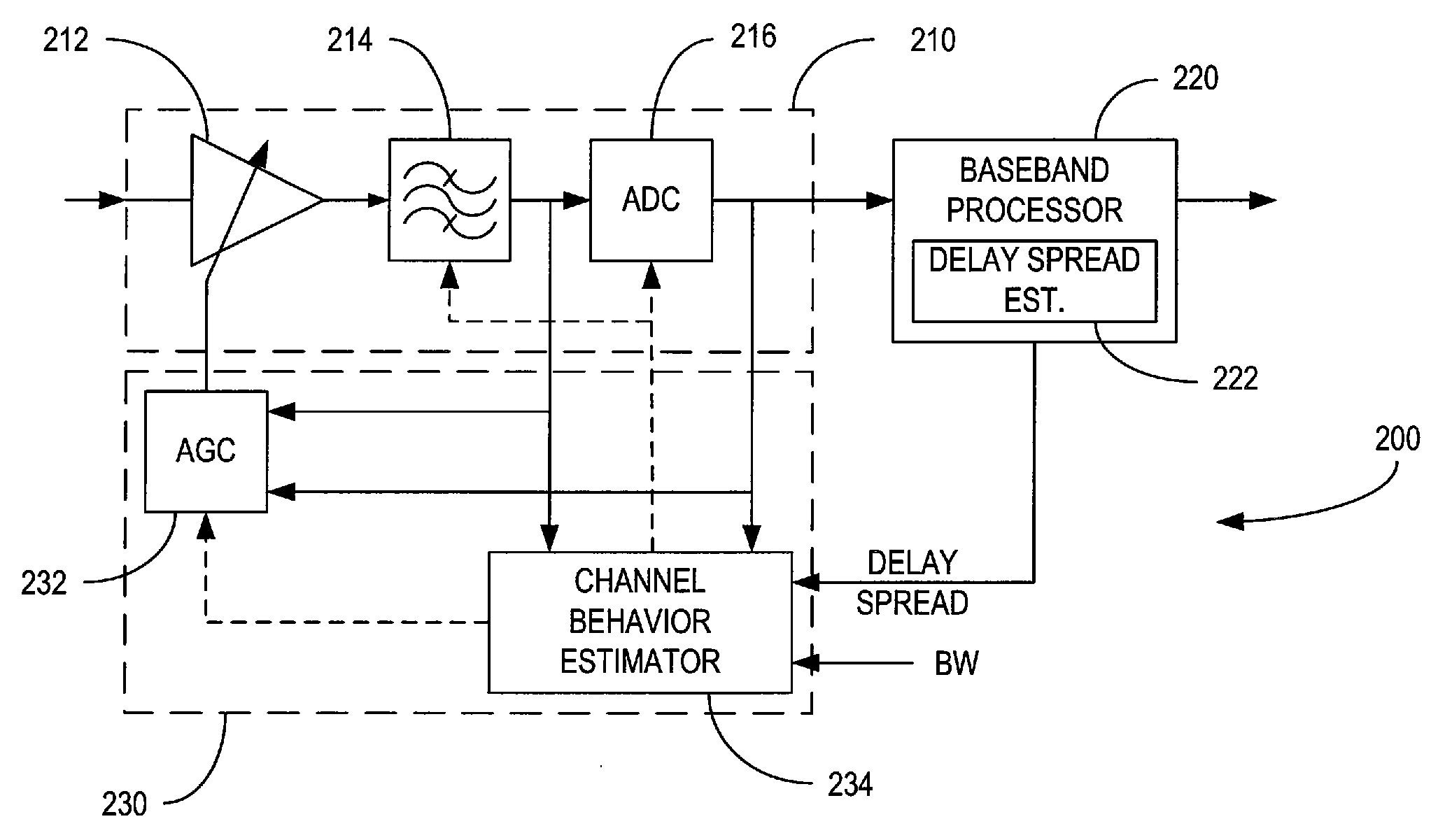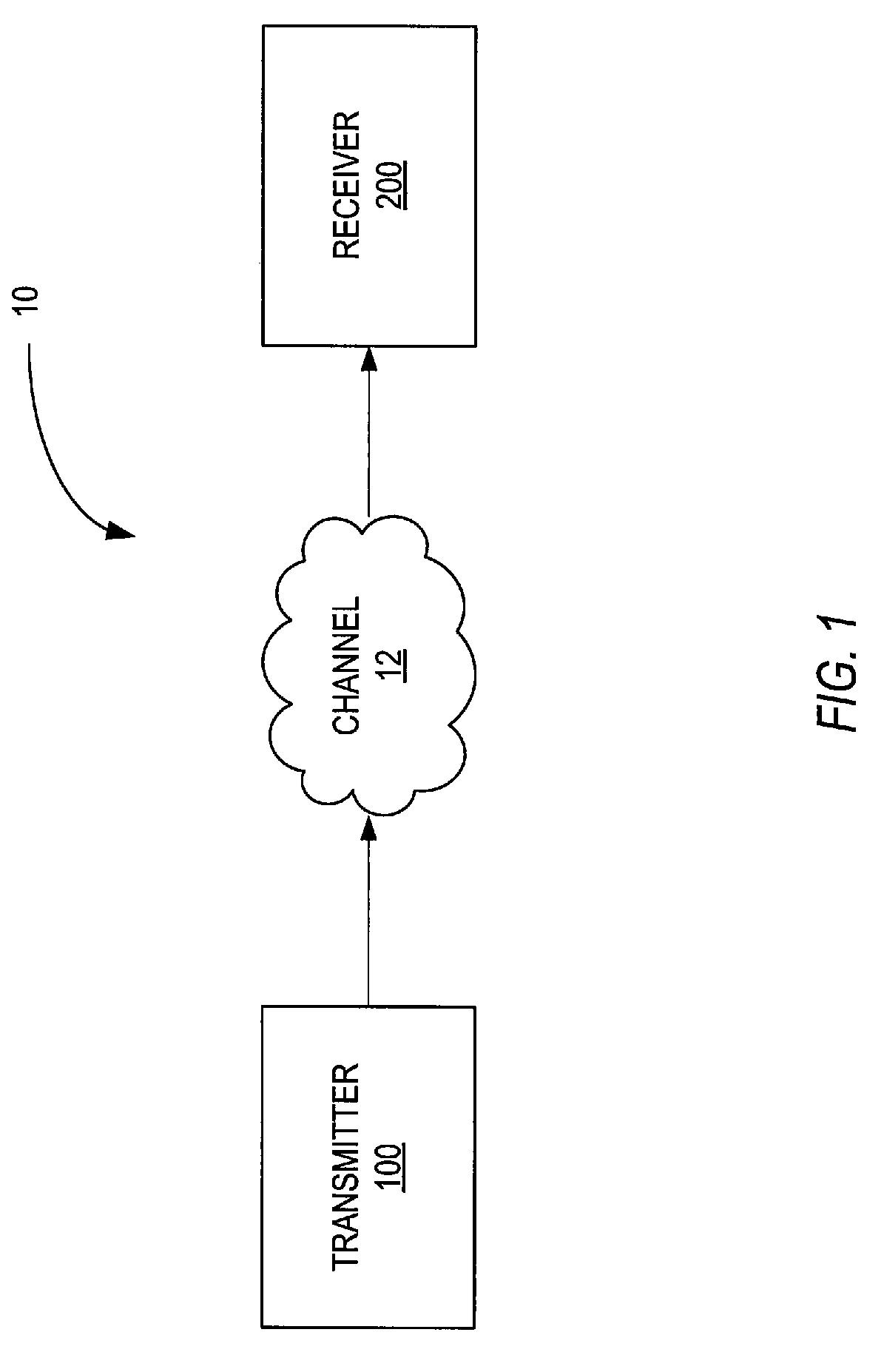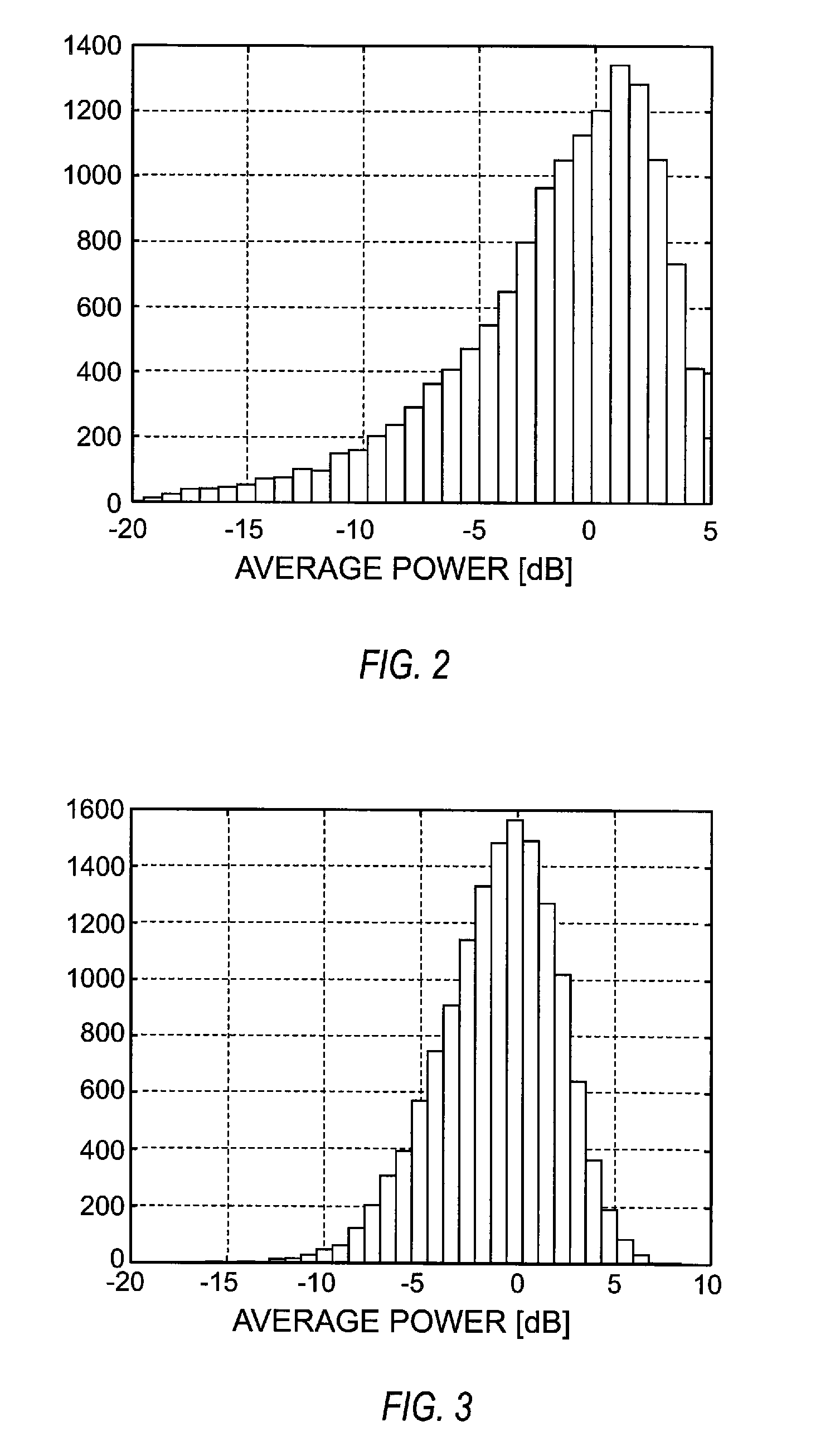Automatic Gain Control Based on Bandwidth and Delay Spread
a gain control and delay spread technology, applied in the direction of amplification control, digital transmission, electrical equipment, etc., can solve the problems of reducing the headroom, introducing quantization errors, and reducing the so as to reduce the amount of signal variation, bandwidth and/or delay spread, the effect of increasing the bandwidth
- Summary
- Abstract
- Description
- Claims
- Application Information
AI Technical Summary
Benefits of technology
Problems solved by technology
Method used
Image
Examples
Embodiment Construction
[0022]Referring now to the drawings, FIG. 1 illustrates in simplified form a communication system indicated generally by the numeral 10. Communication network 10 may, for example, comprise a wireless communication system such as Wireless LAN or mobile communication network operating according to any standard now known or later developed, such as the Wideband Code Division Multiple Access (WCDMA) standard and the Long Term Evolution (LTE) standard. The communication network 10 includes a transmitter 100 and a receiver 200. Transmitter 100 transmits information over a communication channel 12 to receiver 200. Those skilled in the art will appreciate that transmitter 100 and receiver 200 may be part of a communication device having both a transmitter 100 and a receiver 200. The transmitter 100 may be included in a base station 100 in a mobile communication network, and the receiver 200 may be included in a user equipment in a wireless communication network, or vice versa. The present i...
PUM
 Login to View More
Login to View More Abstract
Description
Claims
Application Information
 Login to View More
Login to View More - R&D
- Intellectual Property
- Life Sciences
- Materials
- Tech Scout
- Unparalleled Data Quality
- Higher Quality Content
- 60% Fewer Hallucinations
Browse by: Latest US Patents, China's latest patents, Technical Efficacy Thesaurus, Application Domain, Technology Topic, Popular Technical Reports.
© 2025 PatSnap. All rights reserved.Legal|Privacy policy|Modern Slavery Act Transparency Statement|Sitemap|About US| Contact US: help@patsnap.com



